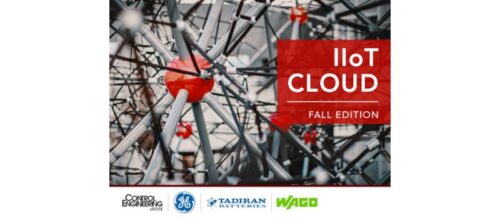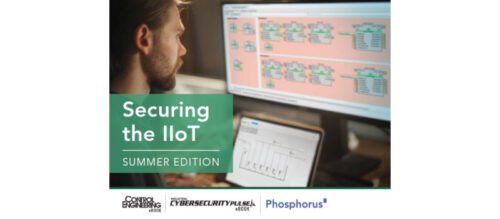Turning smart devices into valuable IIoT devices
There are several ways to make a field device or a sensor "smart" and turning them into valuable IIoT devices.
Traditionally, sensors and actuators were created to be devices with a single function – a proximity sensor detected if an object was in front of it, and a valve actuator opened or closed a valve. In field devices, this single function only later became known as the ‘primary variable.’
“我相信聪明的形容词首次应用n 1985 to Fisher Rosemount’s 3051 pressure transmitter, the first digital field device ever produced,” said Steve Biegacki, managing director at FDT Group. The 3051 was the first field device that employed a microprocessor to process the transmitter’s direct measurements and convert them to a standard signal type. Digital signal processing allowed bidirectional data exchange between the transmitter and higher levels in the automation hierarchy, enabling the device to exchange more data than its primary variable and implementing multivariable data transmission and detailed diagnostics information on the transmitter status.
“To enable the smart features of such a device, a device descriptor needs to be integrated into the higher-level systems to inform them about the range of smart functionalities delivered by the device,” Biegacki said. “An example of this functionality could be the FDT/DTM (IEC62453) specification.”
According to Biegacki, applying the smart adjective to a device required the following:
The use of a digital microprocessor (usually an ASIC) to collect the transducer’s generated process data and convert it to an industry-standard type of signal.
The capacity to transmit more data than the primary variable, preferably using a digital signal encoding method.
The support for digitally encoded, bidirectional communications with the control system or an asset management application.
The ability to perform continuous self-diagnostics and to transmit that diagnostics status information to the upper levels of the automation hierarchy, thus allowing the possibility of performing pre-emptive maintenance by condition monitoring.
The ability to configure, parametrize and commission the device remotely via the control system, an asset management application, or a dedicated programming device.
The capacity to exchange all the additional functionality information through the same digital communications channel.
The availability of a device descriptor based on a standardized information model architecture to enable unambiguous device detection by higher control levels.
So, it is possible to define an intelligent device as an instrumentation with a certain level of situational awareness of its environment and of itself, along with the ability to exchange that information in digitally encoded, bidirectional communication protocols with the upper levels of the automation hierarchy.
“Additionally, a smart device must be identified unambiguously by the higher-level control systems, asset management, and maintenance systems using a standard information model. By performing this procedure, the device’s behavior can be adapted to different working conditions,” Biegacki said.
IO-Link benefits
Peter Wienzek, business development manager at ifm electronic, agrees that sensors were not born intelligent. “For decades, they offered switch points or analog values only. The development of microprocessor technology with a smaller footprint and less cost enabled manufacturers of automation devices to integrate additional features into their devices,” he said. “With the digitalization of sensors, new smart features became possible. A smart sensor consists of a measuring cell, smart software features and a communication interface such as IO-Link.”
Pointing to the advantages of IO-Link – a serial, bi-directional point-to-point connection for signal transmission and energy supply – Wienzek said: “Smart sensors with IO-Link offer logical data channels, both for cyclic process data and for acyclic device data. A classic example would be process sensors, which, in addition to pressure, flow, consumption or level signals, can also transmit temperature signals, service data and events. The result is an ever larger image of the machine and the process becoming available. It is not just the quantity and heterogeneity of the transmitted sensor data that increases, but also the speed and reliability. Intelligent additional functions are also available – such as automated calibration, drift detection and data conversion – directly from the sensor.
Offering an example of intelligent actuators, Peter highlighted grippers used on robots and in assembly applications. “Electric powered grippers can run with one cable only running power and IO-Link communication. Servo-electric grippers have many options to control gripper positions, gripping force and gripping mode. Due to the bi-directional communication abilities of IO-Link, integrated feedback information from the gripper can also be transmitted via IO-Link to the controller. A gripper is a good example of a hybrid device incorporating actuator functions, sensor functions and a microprocessor for smart control,” he said.
看着IO-Link设备的大量the IODD-Finder (IO-Device Description) database, IO-Link is a well-used communication interface for smart devices. It ranges from sensors, and actuators to intelligent lights, displays, power supplies, electronic fuses, drives and many more. Every IO-Link device comes with an IODD, where all its features must be documented in a machine-executable XML format. “With this common IODD standard, all IO-Link devices can be deployed by one configuration software, manufacturer-independent,” Wienzek said.
Communication interfaces are key
Peter Lutz, Director Field Level Communications at OPC Foundation, believes that a field device – independent whether it is a sensor or an actuator – can be considered intelligent if it possesses specific capabilities, such as collecting and processing data. “The level of smartness can reach from some basic pre-processing and filtering of data up to highly sophisticated algorithms including machine learning and artificial intelligence,” he said. “However, field devices do not usually work in isolation; they are connected to a wide variety of other devices, which means that connectivity has become one of the key enablers to drive the digital transformation.”
Communication interfaces have an essential role for intelligent field devices, being used to make raw data or pre-processed data available to external devices or software applications that perform data acquisition and data analytics.
Traditional field communication interfaces are usually limited to the field level. Such interfaces are realized as point-to-point connections between a field device and a controller, or multiple controllers and/or field devices are connected via a field bus. “The major disadvantage of these traditional communication interfaces is that they do not scale up to the edge or even the cloud, which is key for implementing Industry 4.0 and IIoT concepts,” Lutz said. Gateways or protocol converters provide the solution, or the task of converting protocols and/or data is being performed by a controller.”
Lutz went on to argue that the OPC UA (IEC 62541) framework offers a complete, open, standardized and interoperable communication solution with built-in security that not only fulfills the requirements of industrial communication but at the same time, enables consistency and semantic interoperability from the field level to the cloud and vice versa.
“To enable this, OPC UA is being used with different services (client/server and publish/subscribe) combined with different underlying communication protocols (for example, UDP and MQTT) and suitable physical layers (such as Ethernet-APL). With this approach and by adopting additional device companion specifications developed by numerous organizations worldwide – information is made available with standardized semantics directly at the data source, if possible,” Lutz said.
A flowmeter, for example, offers directly standardized OPC UA flow measuring data as soon as the advanced physical layer (APL) cable is plugged in. And analogously, servo drives directly process standardized OPC UA drive setpoints and provide standardized OPC UA actual drive values as soon as they are integrated into a machine network with Ethernet time-sensitive networking (TSN).
“With OPC UA devices and systems – in the information technology as well as in the operational technology domains – communicate seamlessly, regardless of their manufacturer or location, which promotes interoperability and reduces integration costs,” Lutz said.
The OPC Foundation’s Field Level Communications (FLC) initiative is extending OPC UA to meet additional use cases and application areas at the field level, such as determinism, functional safety, motion, instrumentation and I/O. “We can expect that in the future, field devices will become even smarter by adding enhanced capabilities – such as the periodic exchange of real-time critical and safety-critical data – while at the same time the secure connectivity to the edge of the cloud via OPC UA is provided with a vendor-independent data semantic,” Lutz said.
SPE’s role in improving device connectivity
Steve Fales, director of marketing at ODVA, also explained that one of the essential features that make a sensor and/or device smart is a microcontroller that includes both a processor and memory to translate analog signals from a sensor into digital communication, provide device diagnostics; communicate multiple process variables; and sometimes even perform internal calculations. “Smart sensors and devices also support digital communication via industrial communication networks such as EtherNet/IP,” he said.
一个聪明的替代方法t sensor to communicate digitally is via IO-Link. “The benefit of IO-Link is the resulting digital signal; however, the downside is that a gateway is required to translate IO-Link into an industrial Ethernet protocol like EtherNet/IP,” Fales said. He believes that single pair Ethernet (SPE) is the future solution that will enable low-cost sensors and devices to become smart. “SPE will allow devices to receive power and to communicate over a single twisted pair cable over long distances. A key advantage of SPE is that gateways typically won’t be required to translate data from the smart sensors and/or devices since they will already be communicating via an industrial Ethernet network.”
A key variant of SPE is Ethernet-APL, which combines 10BASE-T1L SPE, IEC TS 60079-47 2-WISE intrinsic safety, and IEC 61158-2 Type A Fieldbus cable to enable 10 Mbit/sec speeds, up to 1,000m cable lengths, hazardous area capability without calculations, and easy installation to meet the needs of the process industries.
“Ethernet-APL is poised to revolutionize process automation by moving from 4-20 mA devices to Ethernet-capable devices that will enable multiple process variables, commissioning in seconds instead of minutes, remote commissioning, movement from reactive maintenance to predictive maintenance with diagnostics and prognostics, and process optimization by easily moving data to the edge or cloud and back,” Fales said.
“While an analog device may not be considered smart, its electrical signal can be translated to a digital signal by another smart device to enable the information it gathers to be used by an edge appliance, MES or CMMS system, or sent to the cloud for operational improvement,” Fales said. “It is important to have a plan to digitalise critical devices so that existing analogue outputs can be translated into diagnostics and prognostics to reduce manual maintenance activities that can contribute to unplanned downtime. The days of the maintenance person with a clipboard collecting data and checking device condition are numbered given the new lower-cost smart sensors and devices as well as the increased difficulty in finding workers to perform low value-added tasks.”
– This originally appeared onControl Engineering Europe’swebsite. Edited by Chris Vavra, web content manager,Control Engineering, CFE Media and Technology,cvavra@cfemedia.com.
Do you have experience and expertise with the topics mentioned in this content? You should consider contributing to our CFE Media editorial team and getting the recognition you and your company deserve. Clickhereto start this process.







